Would you agree to lower your standard of living? Would you give up the internet, cell phones, air-conditioned apartments, etc.? I believe you wouldn’t. If you want to continue enjoying your current living conditions, you need to support innovation and do everything possible to keep it going. Innovation must continue. Don’t expect someone else to innovate for you. No, all of us, humanity as a whole, should be innovative everywhere and anytime to make our lives better.
It’s important to mention that innovation always solves existing problems. This article discusses how to innovate, find the best tools for innovative thinking, analyze, and generate excellent ideas. We also describe the innovation process using the PRIZ Innovation Platform.
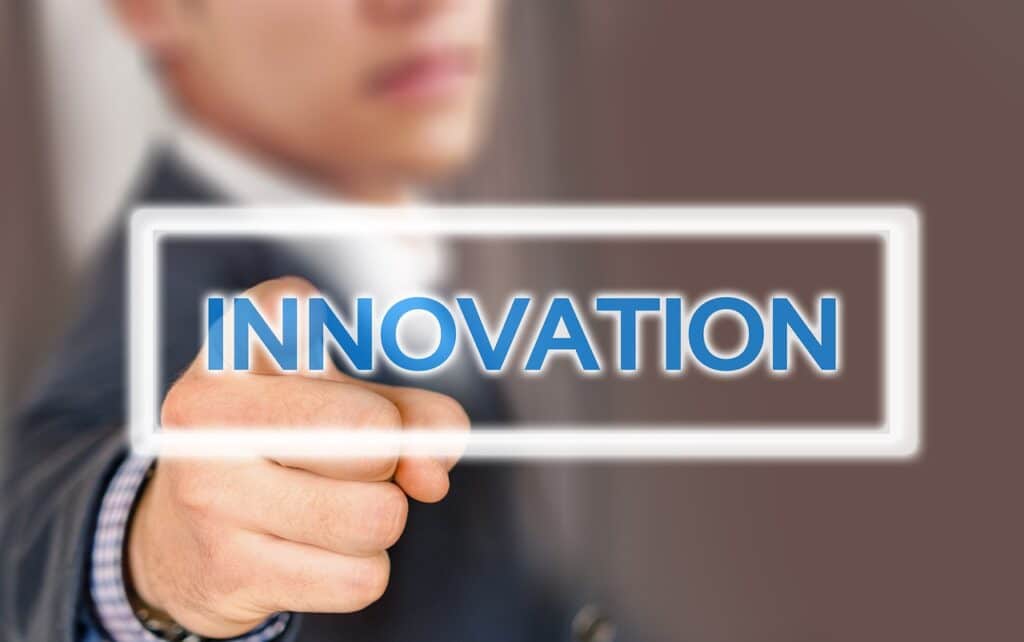
The question is, how do you find a subject for innovation? This is not a trivial question. We have already published several articles describing different aspects of the innovation process. For instance, innovation’s definitions and value are discussed in the article “Is “Innovation” Just a Buzzword?”. The principal differences between changes and innovations are discussed in our article “Changes versus Innovations”.
Let’s focus on practical statements based on well-known concepts of engineering systems evolution developed by Genrihk Altshuller, founder of TRIZ – Theory of Inventive Problem Solving. We all learned the theory, but the problem is understanding how to use it and making a bridge between theory and practical implementation.
The law is defined as follows:
The evolution of the engineering system is governed by objective laws.
What does it mean? How do we understand it? How can it help us innovate?
First, we should understand that we are fortunate; evolution does not depend on our whims. For example, our current smartphone looks the way it does, not because of designers’ whims, but because designers cannot build it differently. Innovation follows the laws of evolution.
Second, any engineering system consists of different components with varying development levels: some components are more advanced, while others are less developed. The conflicts between these two types of components drive the development of engineering systems. Eliminating these conflicts leads to real innovation.
It is simple. Do not reply on your intuition or engineering guessing to find the subject for innovation. This approach wastes time and money without reasonable results. The right way is to listen to the engineering system. Engineering systems communicate through failures, which can range from minor issues like a broken lever to low production yield or high cost. Any failure in an engineering system signals a need for innovation.
So, how do we determine what to innovate?
“Listen” to the engineering system, learn about all failures and disadvantages, analyze the reasons, and eliminate them.
Do not focus on fixing; work on elimination. The difference between fixing and innovation is clear: Innovation leads to financial gain, while fixing increases expenses.
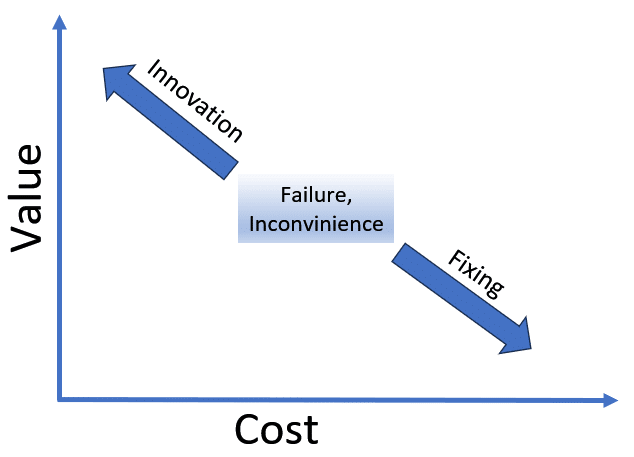
The goal of innovation is to move an engineering system closer to the ideal condition. Increasing ideality is one of the fundamental laws of evolution analyzed and described in TRIZ.
Any engineering system is created to provide certain useful functions. A system consists of different components, and the interactions between these components can be described as functions operating within the engineering system. An ideal system is one that does not physically exist but still provides useful functions.
The ideality of a system is defined by a well-known formula as the ratio of summarized functionality divided by summarized cost:

There are two ways to elevate ideality: increase the number of useful functions and/or reduce costs. It’s important to note that adding unnecessary functions or using low-cost components and parts won’t increase ideality. Such changes can’t be considered innovations. Furthermore, monetary costs aren’t relevant when it comes to innovation. Money cost is a speculative parameter that doesn’t reflect the engineering “cost” of a system.
The formula proposed by Igor Vertkin and described by Isak Bukhman in his book TRIZ Technology for Innovation reflects the engineering “costs” much better. The formula suggests using the sum of the components:

Great. The formula displays the level of ideality as a ratio of the number of useful functions to the number of components in the engineering system that ensure the existence of those useful functions.
We propose a slight change in the formula to emphasize that only Basic Useful Functions should be taken into account:

The basic function is the reason the engineering system was created. It directly affects a product (target) of the system. For example, a car is built to move a person, so the basic function of a car is to “move”. The product of a car is a person.
Our version of the formula shows that the ideality level depends on the number of basic functions and the number of components needed by the engineering system to provide these functions.
Innovation should elevate the ideality by adding basic functions that are useful to the customer and eliminating components that are harmful or have low functionality.
We already described the power of Functional Modeling in our article “Functional Modeling with the PRIZ Innovation Platform” and in our knowledge-base documentation “Functional Modeling”.
Here are the proposed steps to innovate using Functional Modeling:
A typical Functional Model created with the PRIZ Platform is shown below:
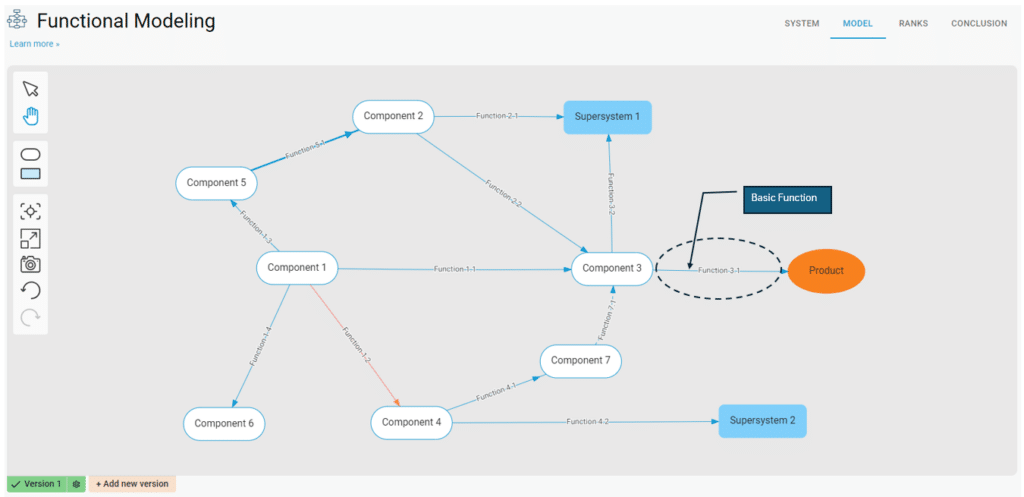
The Functional Model contains the Product (Target). Component 3 provides Function 3.1, a basic function because it directly affects the Product. There are 7 components in the system and 2 Supersystem components. Supersystem components do not belong to the system but contribute to its performance. Although they can be part of the system, we classify them as Supersystems when we do not want to modify them.
What can we do with the Functional Model? How does it help us innovate? The Functional Model provides two benefits: it helps us understand how the system works and guides us in innovative thinking.
Let’s revisit the Functional Model we built for our system. What do we see? First, we see how far our system is from ideality and how complex it is. Generally, we only need Basic Functions. In our case, we used a total of 9 components to provide just one function – the basic function.
The elimination of the number of components is the main direction of an innovation.
Based on the Functional Model, the PRIZ platform automatically calculates and displays the main parameters of the system, along with the functional and problematic ranks of the components. It then provides recommendations for innovative improvements in the system.
The typical summary is shown below:
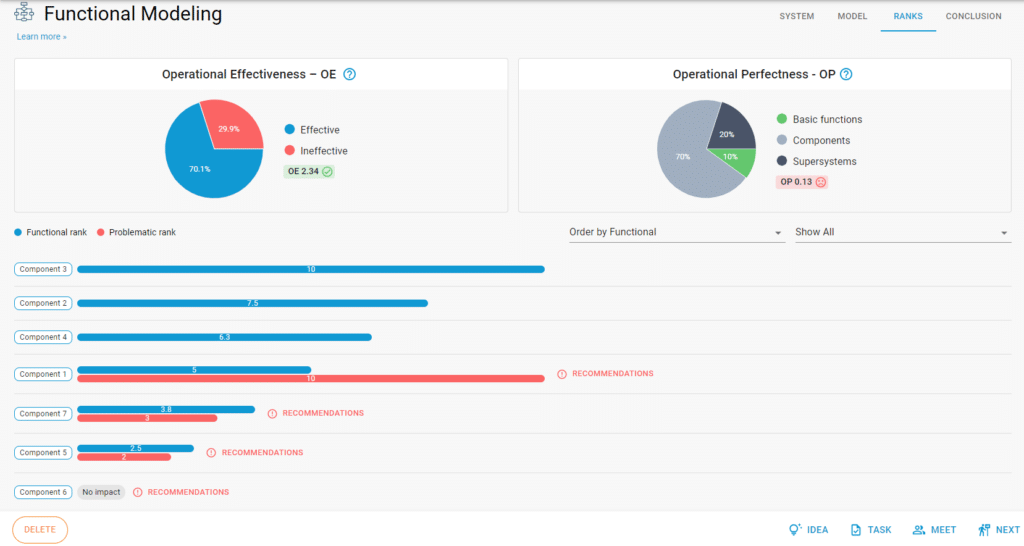
The analysis of the Functional Model is based on the functional and problematic impact on the Product.
Operational Effectiveness (OE) measures the ratio between total functional and problematic ranks. Ideal effectiveness means the system has no components providing problematic functions.
Operational Perfectness (OP) is calculated as the ratio of the sum of Basic Functions (affecting the Product directly) to the total number of system components, including Supersystem components. OP indicates how close the system is to ideal conditions. Remember, the fewer the components providing basic functions, the closer the system is to ideality.
1. Component 6 has no functional impact on the product. The main recommendation is to remove this component from the system.
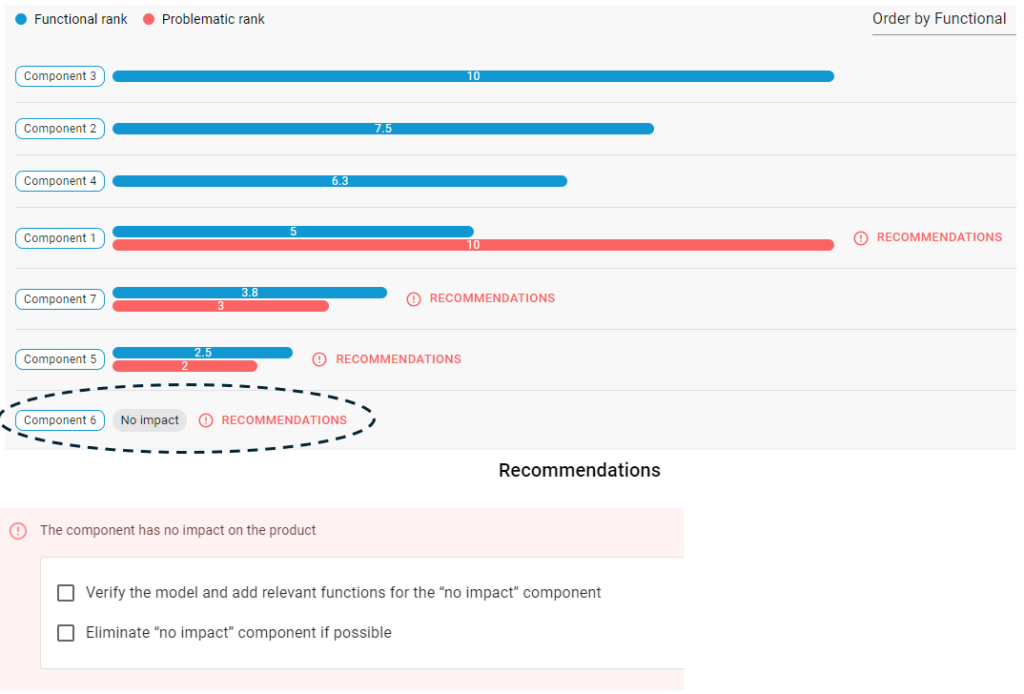
2. Component 5 has an excessive function (stronger than desired) that should be analyzed and reduced.
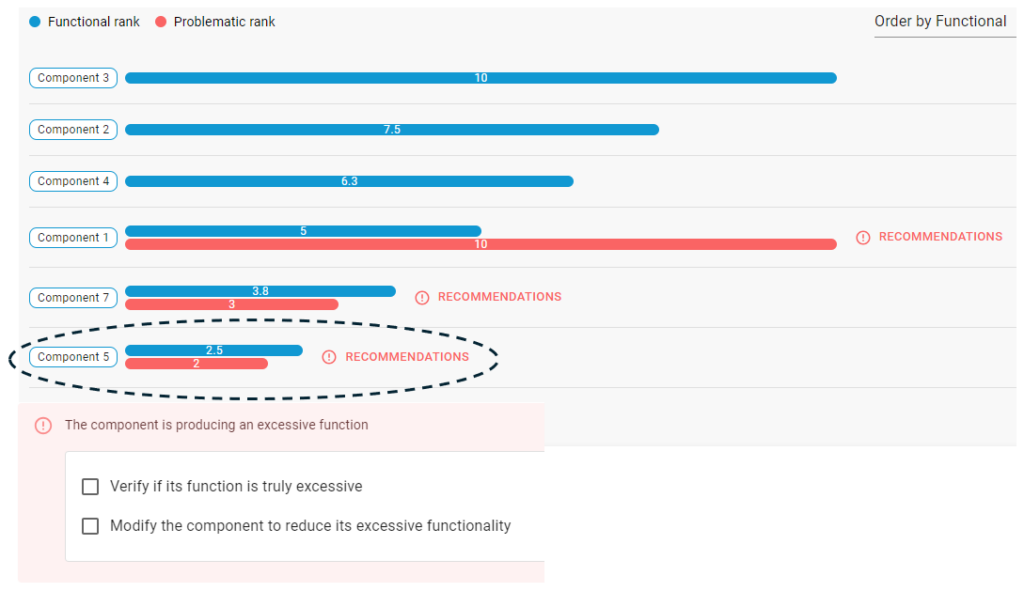
3. Component 7 provides insufficient functionality (weaker than desired) that should be investigated and improved.
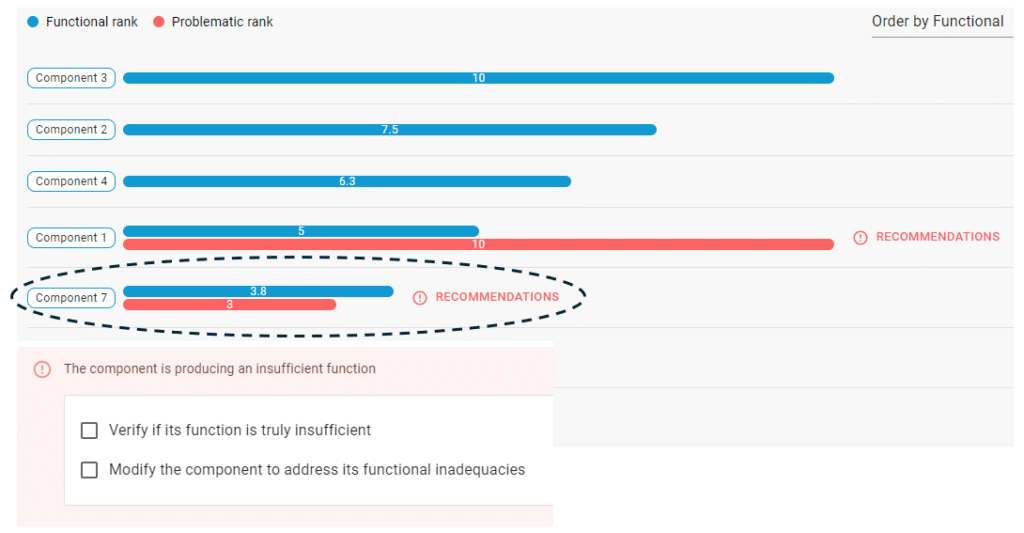
4. Component 1 provides both useful and harmful functions. The platform’s main recommendation is to resolve this conflict (engineering contradiction) using the 40 Inventive Principles. A relevant button will appear in the recommendation field, which will navigate automatically to the Inventive Principles tool. Resolve the contradiction and improve the system.
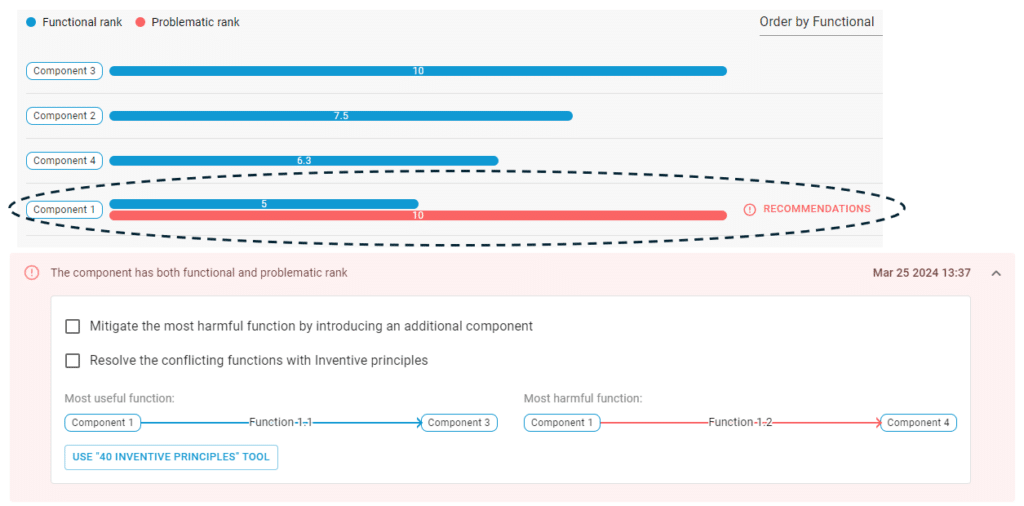
Once the improvements been implemented, close the model and adjust accordingly. At that point you will have the functional model of the new and improved system. Since is it never perfect, you can repeat the analysis and innovate further.
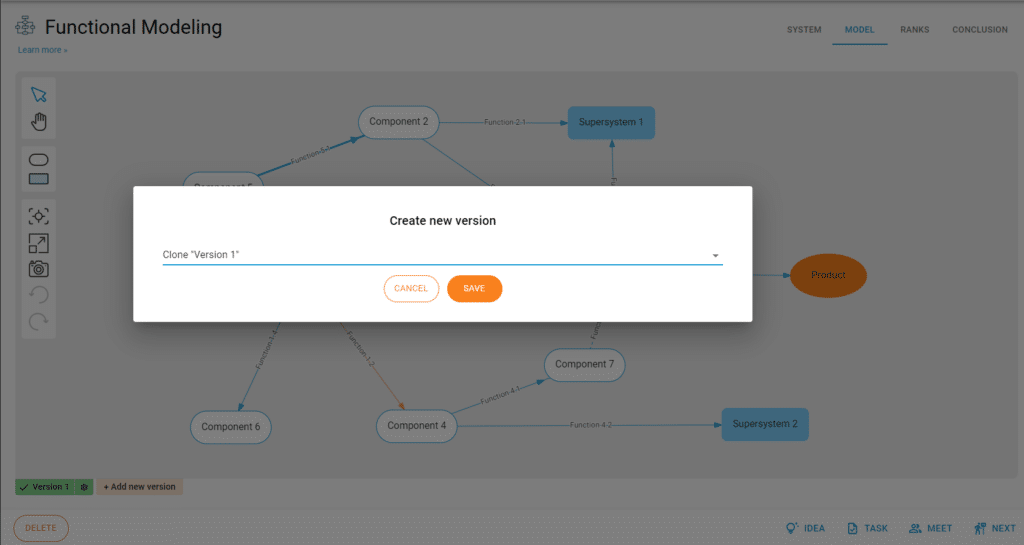
Please remember that innovation always drives changes toward ideality: providing basic functions with the minimum components.
Functional Modeling is the strongest tool for understanding how ineffective the system is and for revealing the directions for innovative improvements.
The PRIZ Innovation Platform offers a whole stack of tools for generating innovative solutions.